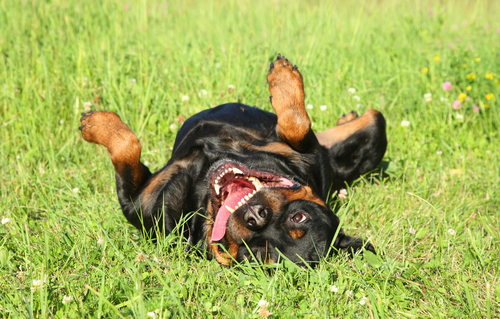Quick! First thought with the word—Chihuahua? Ankle biter? Snuggle bug? How about—Dachshund? Weiner dog? Digging fanatic? Everyone has preconceived notions about most breeds. Thinking of a St. Bernard may equal rabid killer for some or slobber giant for others. What about a Collie? Is she a multi-lingual communicator or dog with an attitude? What if the breed had a less than stellar reputation? How does society overcome breed stereotypes and accept a dog at face value?
The history of discrimination
In the 1950’s it was that new dog from overseas, the German Shepherd, that was the dangerous breed to steer clear of. 1970’s it was that sleek black devil dog, the Doberman Pincher. By the 1980’s the Rottweiler had moved up on the list of dangerous breeds needing to be eradicated. Keep the children far from its slobbering jaws and lightening reflexes. Today, it is the American Pitbull, or anything that remotely resembles a “pit” looking-like dog. Take the quiz “Can you Pick the Pit?” Most people can’t pick the pitbull on the first try (or second, or third).
Is there any truth to the myths?
Close to two hundred dog breeds registered with the AKC and only one breed is designed with jaws lock in place? This same mythical breed can hold its front teeth closed while chewing with its back teeth. It’s been said they have more bite pressure per square inch than any other breed and don’t feel pain. Brain swelling makes this breed go crazy. All of these beliefs revolve around the “pitbull”. How did the most popular dog in America at the turn of the century get to this point one hundred years later?
A few bad apples spoil the bunch!
Disreputable breeders came out of the woodwork, mass producing notorious breeds such as the “pitbull”, Rottweiler, Doberman, and German Shepherd. They sell the puppies to inexperienced owners that use the dog as a status symbol. The puppies grow into adolescence with no training or manners imposed upon them. More often than not, the unruly “teenagers” are deposited on the doorstep of a local shelter because owners have no idea how to deal with them.
Color does play a factor
It is a statistical fact that black dogs are far less likely to be adopted from shelters and rescues than any other color dog. Some people have a subconscious aversion to black dogs. Likely due to the fact that movies and TV shows almost always depict a dark colored dog as the portent of doom and evil.
How to educate the public
Get involved! Donate time to a local shelter or rescue. Is there a breed that creates discomfort?
Spend time with the breed. Take the time to get educated, see if it is in fact the breed itself or a bad rap that causes unease. Attend animal events, set up a booth and begin educating the public. Pass out information, answer questions and dispel the myths surrounding these amazing animals. Knowledge is power, spread the power and someday, breed discrimination will be a thing of the past.
*****
Renee Moen is a certified dog trainer and veteran shelter employee. Specializing in basic obedience and behavior modification, she recognizes each dog for their unique qualities and utilizes those for positive training experiences. Renee is an advocate for dispelling breed myths and denouncing breed discrimination. All dogs are created equal, owners on the other hand…
Living in sunny Longmont, Colorado with her husband, two children, two dogs, two cats and five birds, Ms. Moen is also an accomplished writer with five romantic comedies to her credit. She enjoys hiking in the foothills (with her fur babies), roller skating and swimming.

 Toledo, United States.
Toledo, United States.